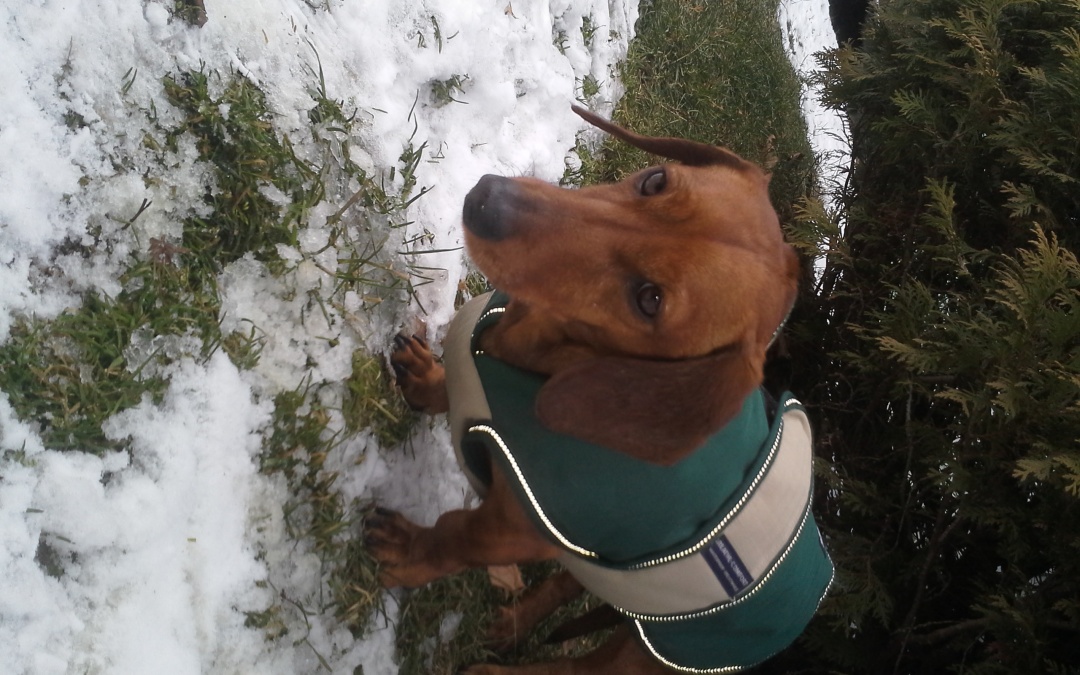Meet Ruby a four year old dachshund who loves to run and play hard with her corgi and 3 dachshund housemates. Ruby’s parents noticed that she was weak in her hind end when they went to bed in the evening and the following morning (approximately 10 hours later) she was able to bear weight on her hind limbs, but was not able to walk on her own. Her parents had a previous dog that needed back surgery, so they knew it was time to take her in to BEVS for emergency care. They also noticed that she was not able to urinate and her symptoms were worsening quickly. After a thorough neurological exam, it was noted that Ruby still had deep pain present (ability to feel and withdraw from pain in her feet), she was diagnosed with IVDD – Intervertebral Disc Disease and referred to our surgeon, Dr. Helia Zamprogno for CT/Myelogram and surgery. The CT and myelogram identify the herniated disc, allowing the surgeon to decide the location that requires surgery and the correct side to approach from. 85 – 95% of dogs that are taken to surgery with deep pain will walk again with surgical correction. 50% of dogs that do not have deep pain at the time of surgery will walk again with surgical correction within 24 hours of loosing deep pain. The longer a dog waits for surgery after losing deep pain the less likely they are to walk again, even after surgical correction. Recovery from surgery requires dedicated nursing care, physical rehab and time as it can take several weeks to regain the strength and proprioception needed to walk again. At home care involves a safe well padded area to rest, bladder management (regularly expressing the bladder when they are not able to urinate on their own) and giving daily medications.
Here Ruby is recuperating with her brother Max.


